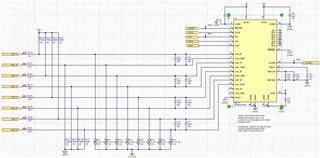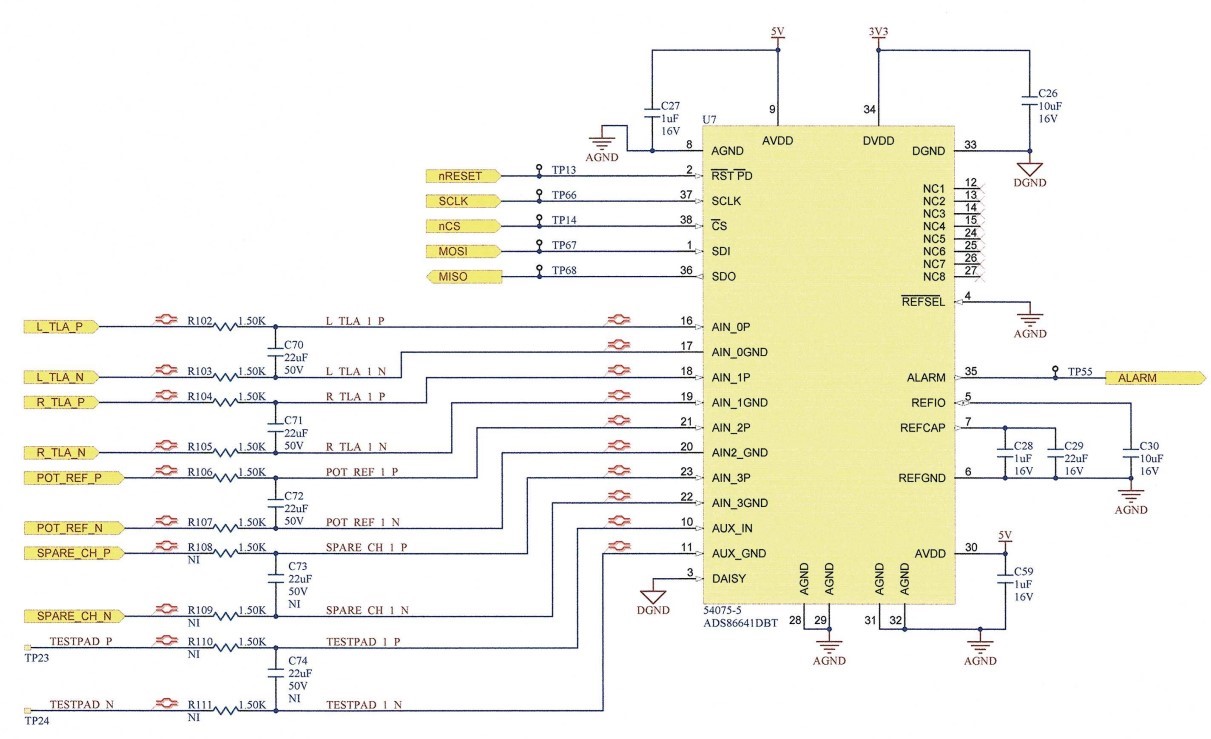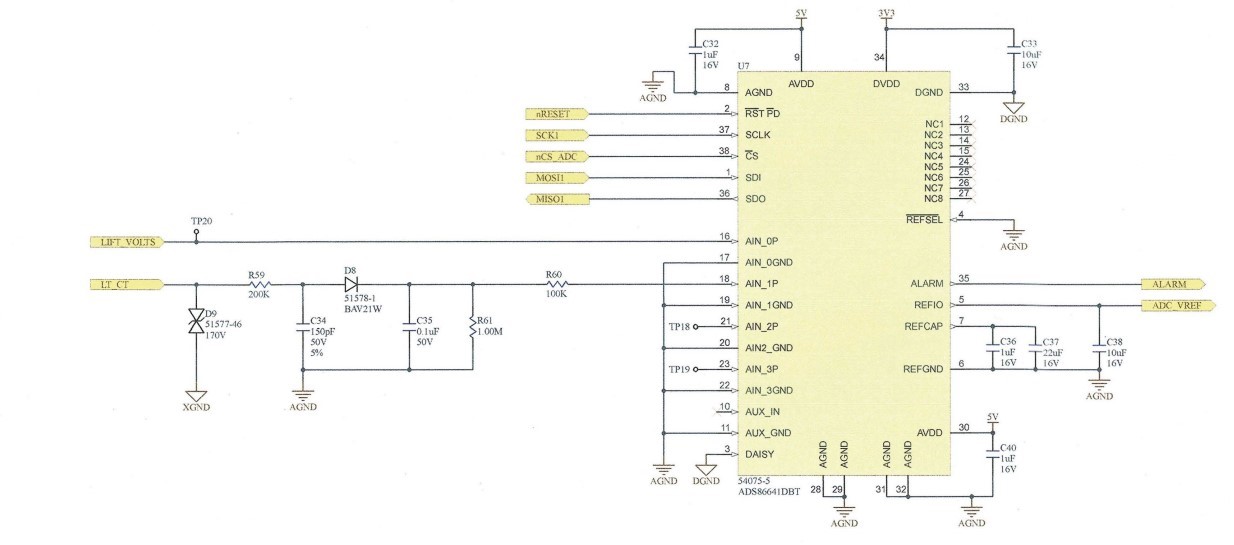Hello,
I am using the ADS8664 for 4 analog input signals in one of my designs (schematic below). The problem I am having is that the ADC input gets locked up intermittently. I have checked the SPI output to ensure that the receiving microcontroller isn't the device getting locked up, when using a logic analyzer I can see that the SPI messages are healthy and do indeed repeatedly output the same message. This would imply that the ADS8664 is getting "stuck" internally somehow.
The error will sometimes clear with a power cycle, though not consistently; this is slightly more consistent when I disconnect the main harness connector to the unit. The error has cleared itself while the unit was running, though this has been rare. The voltage range of the inputs is roughly -10V to 10V. We have used this device on two other designs with an effectively identical supporting components and no issues, the only difference I found was that we grounded REFSEL to our AGND plane (analog ground section) on the other designs. As you can see below I grounded this chip to our DGND plane (digital ground section). The data sheet states "In order to select the internal reference, the REFSEL pin must be tied low or connected to AGND." This "or statement" is confusing, as tied low could imply DGND. In any case, I tried lifting the REFSEL pin and jumpering it to AGND in case there were noise issues, but the issue persisted; however, I am not sure if the speed wire would be efficient for this rework if the issue is digital/analog noise effecting the other side of the internal circuitry.
This issue has shown itself on multiple units in the same fashion, so unless this is a "chip lot" malfunction issue, I have proven that simply replacing the chip does not fix the issue. I am out of ideas for troubleshooting the chip itself, and wondering if I should start investigating other areas of my circuit board. I am also wondering if at this stage, if the circuit looks good, I can start to push the software team to troubleshoot from a programming angle, perhaps timing issues? That area is out of my element.
Any suggestions to help me home in on a solution would be greatly appreciated.
Thank you for your time!
-
Ask a related question
What is a related question?A related question is a question created from another question. When the related question is created, it will be automatically linked to the original question.



